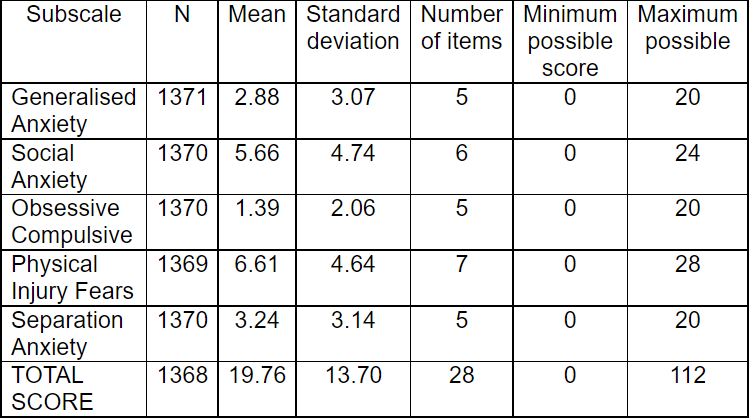preschool ANXIETY SCALE: norms and interpretation
The scale was developed to assist in clinical assessment, and is not a diagnostic instrument if used on its own. It can provide an indication of whether children are showing elevated levels of anxiety, and should be used in combination with a clinical diagnostic interview if a diagnosis is required. It can also be used to evaluate change over time in response to treatment or prevention programs, and to identify children who are at risk of anxiety problems and who many benefit from early intervention. It is recommended that clinicians read the published paper for further details about the development of the scale and its psychometric properties.
Spence, S.H., Rapee, R., McDonald, C., & Ingram, M. (2001). The structure of anxiety symptoms among preschoolers. Behaviour Research and Therapy, 39, 1293 - 1316.
norms and interpretation of scores
Table 1 below shows the mean scores and standard deviations for each subscale and the total score for ages 3-6 years based on a larger sample of Australian preschoolers aged 3-6 years (N= 1368). These with data were obtained from community-based studies conducted at University of Queensland (Sue Spence and Casey McDonald) and Macquarie University (Ron Rapee, Michelle Ingram and Jennie Hudson). Although significant age and gender effects were found (but not age by gender), these were not substantial and not of such magnitude to warrant use of separate norms and T-Scores (see T-score Page).
In interpreting the scale, it is suggested that a score of 1 standard deviation above the mean for a subscale or the total score could be regarded as "elevated" and would warrant further clinical investigation.
TABLE 1
Mean scores and standard deviations for children aged 3-6 years in
community contexts for subscale and total scores on the Preschool Anxiety Scale.
